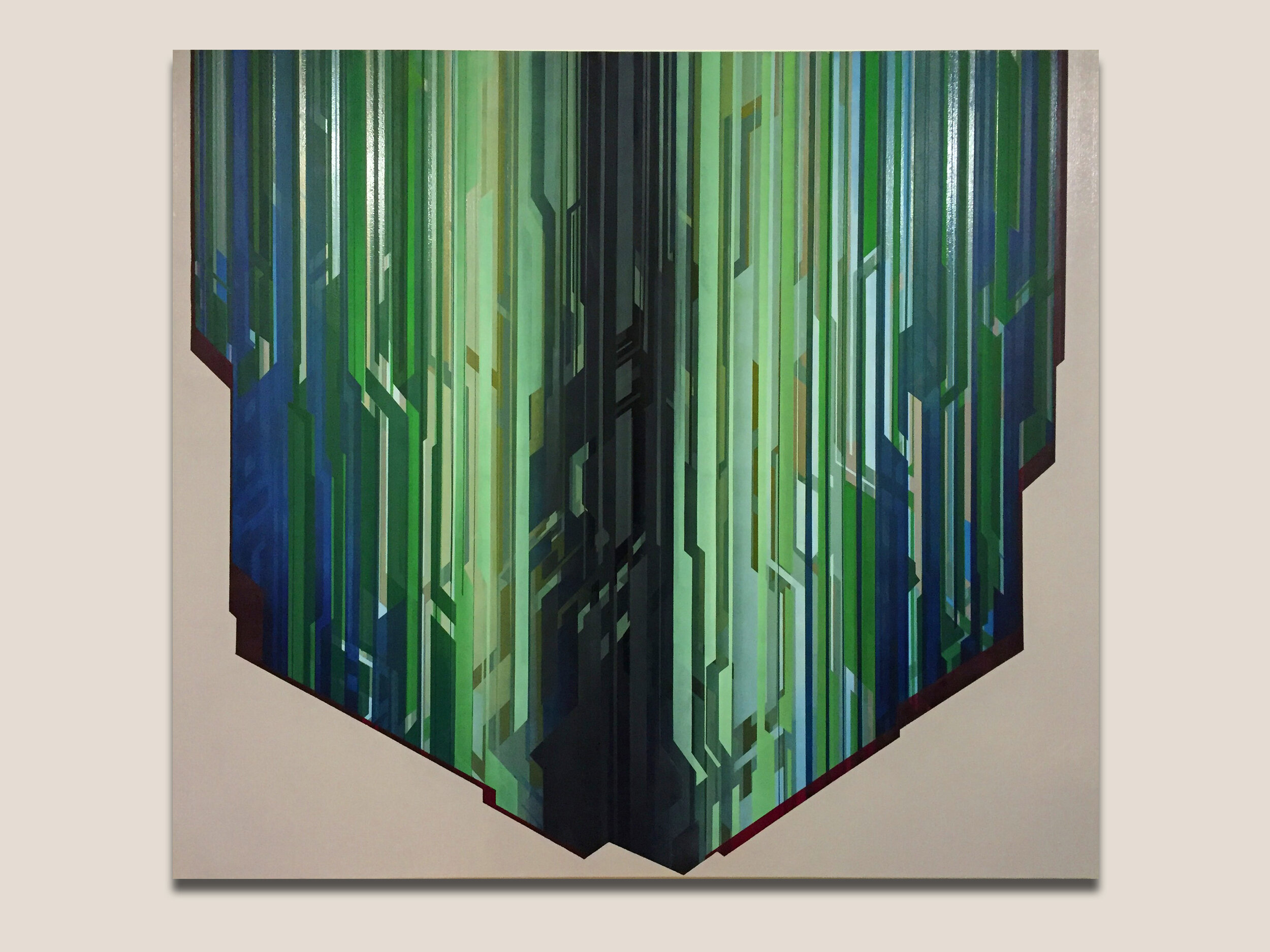Distribution Paintings - the mistrust of absolute truths
My sculptural output has a foot in sociological methodology. The interventions of Citizen or the currency distribution have myself at the forefront. I am quite visible in the actions that make these works, even though I am personally anonymous. These kinds of works parallel quantitative research methods – perhaps data collection without analysis. They turn me into the census-taker, the pollster, the bean-counter. Along with this mainly sculptural work in which I am ‘on show’, I have been working on new paintings – a step back from the action and concept driven work..
I have been developing imagery that is reminiscent of the statistical presentation of social data. This has been problematic for a couple of reasons. For one, I have ended up working with oil paint again (a medium I haven’t attempted to address seriously for a good few years). Secondly, I have identified a temptation and potential trap and subsequently have had to accommodate that.
It started with this. I had a series of objects that I had textured and pretentiously superimposed the classic normal distribution bell-curve. The lower left tail-end of the graph is deliberately excised. In most sociological data, this would typically represent the lower income bracket or impoverished, the disadvantaged, the disenfranchised and repressed, the forgotten – how very political of me. I like the tension that aberration brings to clusters but this has none.
Then I made this structure with notched dowel inserted into holes in the wall and then connected with black elastic. The same mathematical description of the normal distribution is responsible for the central arch and two half-sections at the sides. This parabolic curve is the optimal solution for arches within load bearing structures.
Finally, this weighty experiment consists of ten viscalene tubes containing water hung between two hooks. Again, the bowing shape matches exactly the parabolic forms prevalent in social data. The temptation really started to show itself. I saw that the artistic treatment of the normal distribution applied theoretically to social data yet also underpins physical structures and how force acts upon them. Gold dust, surely?
I started collecting the subtlest parabolic curves I could find. Unsurprisingly, the transport networks are full of them. Sections of track coalesced with the edges of platforms. I took pictures just as I imagined hypothetical but mystically corresponding sets of data describing the movements of passengers, their age ranges, economic condition, mental health indices and shoe sizes – all somehow conforming to an intuitive sense of statistical equilibrium.
This is where the problem set in. I think artists can be seduced by the prospect of discovering hidden profundities. When I think about the clever ways concepts can mingle with glittery aesthetics in an art gallery, I get suspicious. When underlying, yet vague principles attempt to hold things together in any abstraction, it makes me think of the unconvincing ciphers of the Kabbalah. Artists have rabidly chased mysterious golden ratios or laws of thirds that mingle with enticing hints of Cartesian proofs or maybe fundamentals as rigid as Pi or the Planck length – as if the gestures of their practice might be abstracted axioms that hold the promise of instinctively building to some kind of Euclidean final word in a chosen genre. This is the temptation.
The seduction of underlying structures that need never be proven isn’t benign. It scours at diligence. It promotes the same creeping sense of slick unease that allows for the acceptance of revealed wisdom from a deity. Our own primate urge to seek patterns and to twist anecdotal experience to fit a world view made up of patterns isn’t rigorous enough, particularly when building artwork upon methodology. The process of seeking patterns is founded upon an erroneous assumption that implicit meaning in the observed world functions without human presence or intervention. Something felt wrong.
It would be easy to follow this dogmatism to the point of not making any work at all. I was mulling all this over but I had already started working on canvases. I should point out, they were really started as a means of working in the evenings when I didn’t have the usual workshop access. I thought they would become a pass-time or a way of winding down. Anyway, my wariness at accidentally producing anything that looked like an attempt to push an ‘absolute truth’ led to some jarring tonal and composition choices. Feeling the zealotry of the contemporary artist dumb enough to dare to use oil paint again (and all the criticism that invites), I took a long, long time to finish a series of images that I felt complemented the rest of the practice yet also stood apart from it. I named them Distribution as I felt that, despite the above mentioned mutterings, they are representative of the pictorial display of statistical data; the columns, rhythms, aberrations and biases. At heart, they are paintings of information, nothing more.
Distribution V, 2017- oil on canvas, 170 x 150cm





